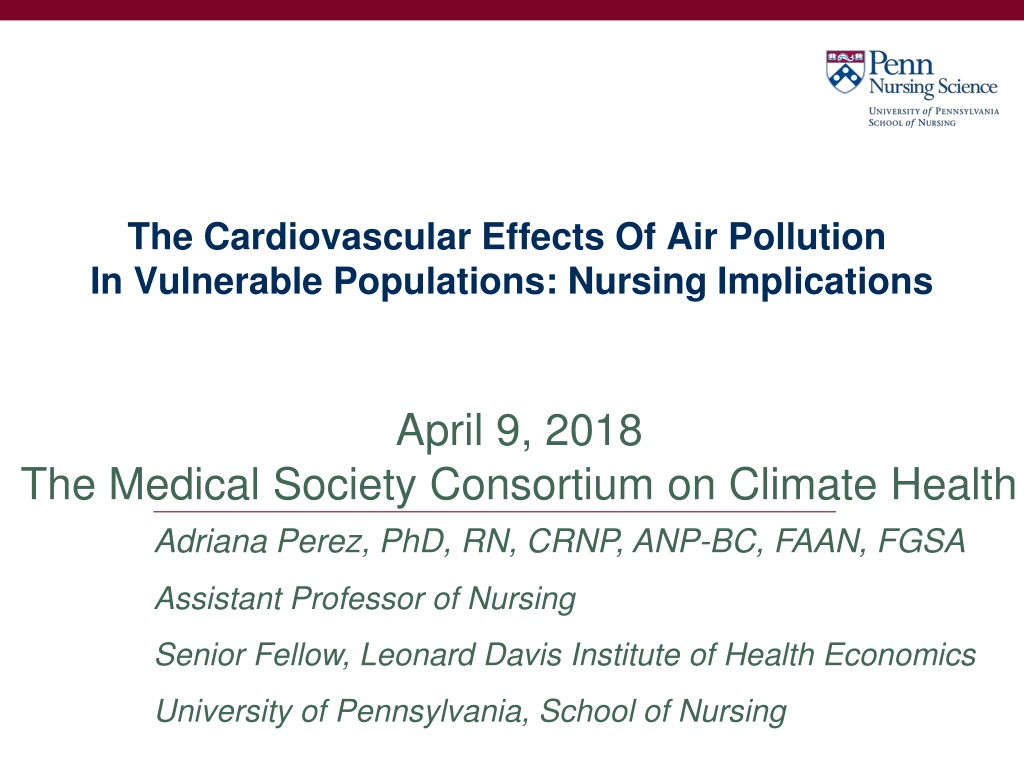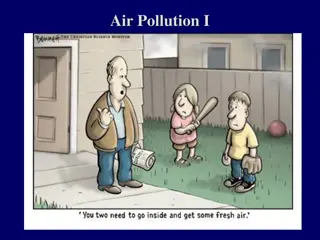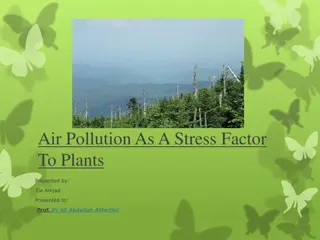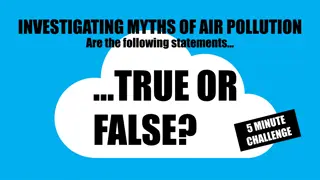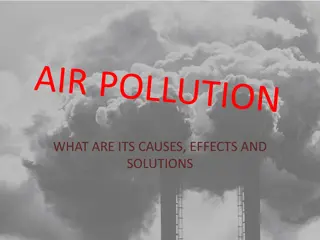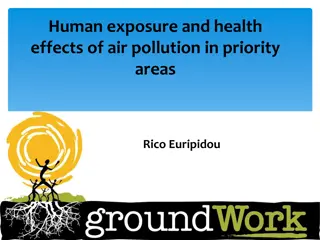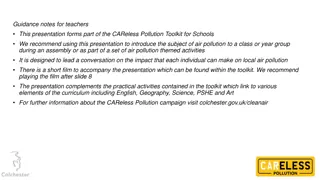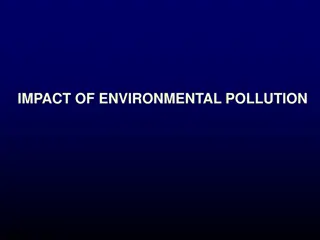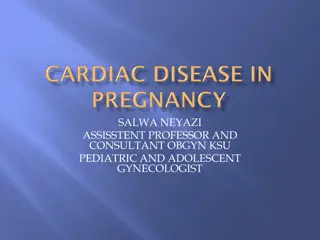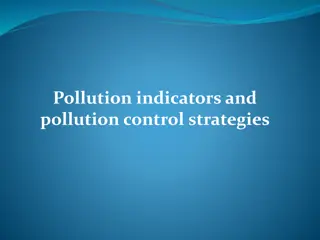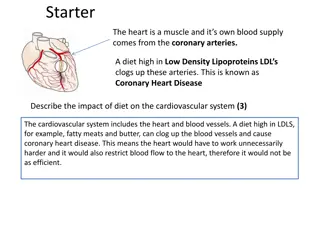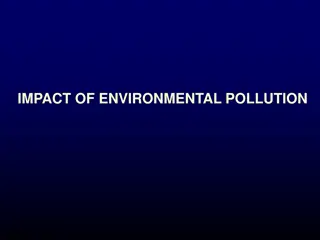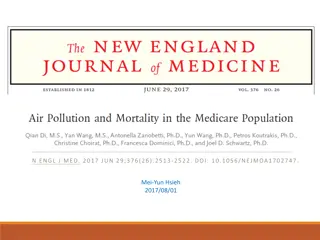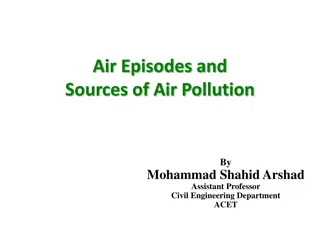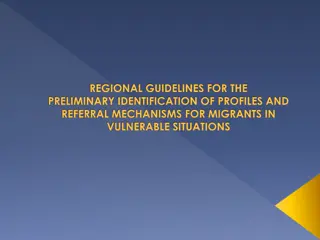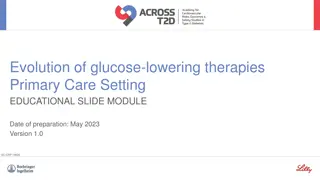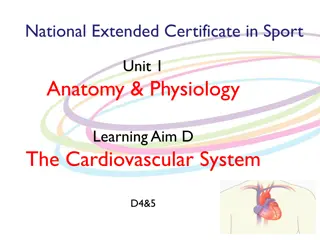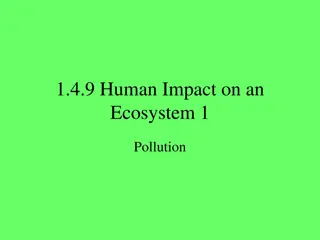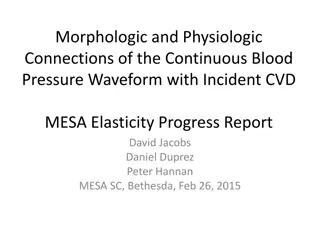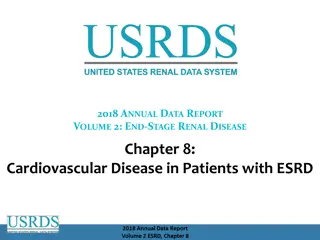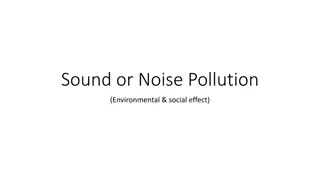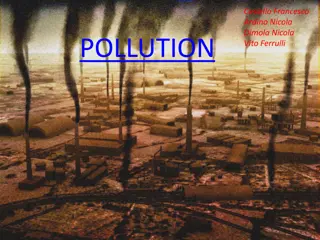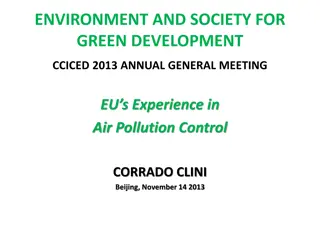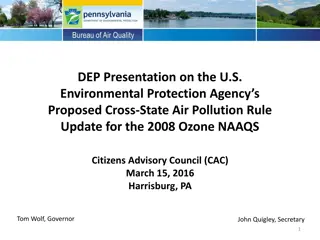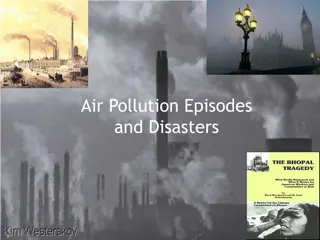Understanding the Cardiovascular Effects of Air Pollution in Vulnerable Populations
This presentation discusses the significant cardiovascular effects of air pollution, particularly on vulnerable populations such as older adults, women, and Latinos. It highlights the environmental factors contributing to cardiovascular health disparities and emphasizes the nursing implications for promoting cardiovascular health and climate solutions through advocacy, research, and practice. The content reveals the causal relationship between exposure to air pollution and cardiovascular events, emphasizing the importance of addressing this issue for public health.
- Cardiovascular health
- Air pollution
- Vulnerable populations
- Nursing implications
- Environmental factors
Download Presentation

Please find below an Image/Link to download the presentation.
The content on the website is provided AS IS for your information and personal use only. It may not be sold, licensed, or shared on other websites without obtaining consent from the author. Download presentation by click this link. If you encounter any issues during the download, it is possible that the publisher has removed the file from their server.
E N D
Presentation Transcript
The Cardiovascular Effects Of Air Pollution In Vulnerable Populations: Nursing Implications April 9, 2018 The Medical Society Consortium on Climate Health Adriana Perez, PhD, RN, CRNP, ANP-BC, FAAN, FGSA Assistant Professor of Nursing Senior Fellow, Leonard Davis Institute of Health Economics University of Pennsylvania, School of Nursing
Presentation Purpose 1. Describe the cardiovascular (CV) effects of air pollution. 2. Recognize environmental factors that increase cardiovascular (CV) health disparities among vulnerable populations. -- older adults, women, Latinos 3. Discuss nursing implications for promoting cardiovascular health and climate solutions through advocacy, research and practice.
The Cardiovascular Effects of Air Pollution Traditional CV risk factors account for the major portion of the risk for ischemic cardiac events. Sufficient epidemiologic evidence to conclude that a causal relationship exists between: short-term & long- term exposure to PM2.5 & mortality. Short-term exposures to elevated levels of particle pollution can worsen heart failure, trigger heart attacks, strokes & some arrhythmias. Long-term, exposure to air pollution can have more insidious effects, such as accelerating the development of atherosclerosis, & contributing to premature death. US EPA, 2009 Final Report: Integrated Science Assessment for Particulate Matter, https://cfpub.epa.gov/ncea/isa/recordisplay.cfm?deid=216546 US EPA, 2013 Final Report: Integrated Science Assessment of Ozone and Related Photochemical Oxidants, https://cfpub.epa.gov/ncea/isa/recordisplay.cfm?deid=247492
Air Pollution Deaths Comparable to Alzheimer s, Diabetes, Flu 30.0% 30 740 ~130,000 excess deaths attributed to outdoor air pollution in the U.S. % of Total Deaths 585 25.0% 20.0% 20 15.0% 10.0% 10 (No. of Deaths in Thousands) 149 131 85 76 57 5.0% 47 41 38 36 0 0.0% Cause of Death National Vital Statistics Report 2016
Cardiovascular Health Disparities Among older Latinos, CV health disparities may reflect differences in environmental factors, including issues related to neighborhood walkability and air pollution. Latinos represent 7% of the older adult population; and expected to increase to 25% by the year 2050. States with the largest Latino Population will increase the most in the next 15 years. These include: Arizona, Nevada, Texas, Florida As women age, they are at risk for chronic diseases including CVD, diabetes, COPD, and asthma.
Estimated Excess Mortality Burden of Air Pollution Deaths by County PM2.5 and O3-related Mortality by Countybased on 2005 air pollutionlevels < 19 20 to159 160 to379 380 to799 800 to2,799 2,800 to5,400 US EPA sBENMAP h 6ttp://www.epa.gov/airquality/benmap/index.html 6 Fann et al. Risk Analysis2012
Effects of Air Pollution on the Cardiovascular Health of Latinos Specific to lifestyle and environmental factors contributing to CVD, many older Latinos are at particular risk for exposure to hazardous pollutants occupational factors higher rates of traffic density in disadvantaged neighborhoods Mobility and community engagement is affected by the design and characteristics of the environment, including the availability of walking paths. These challenges may increase the risk of CVD as they interrupt healthy food systems and make mobility more difficult.
Latinos in America Are Far More Likely Than the Average Citizen to Breathe Polluted Air. (Velez,J. 2016)
Significance Many Latino communities face an elevated risk of health disparities, including cancer, asthma, CVD, due to air toxics emissions from oil and gas development. Nearly 1.78 million Latinos live in counties that face a cancer risk above EPA s level of concern from toxics emitted by oil and gas facilities. Air in many Latino communities violates air quality standards for ozone smog. Latinos are particularly burdened with health impacts from this air pollution due to high levels of poverty and relatively low rates of health insurance coverage.
Nursing Implications: Practice, Research, and Policy Million Hearts 2022 Framework includes information on improving outcomes for priority populations. People who have had a heart attack or stroke are advised to increase cardiac rehabilitation participation, avoid exposure to PM2.5 Advancing environmental health literacy (EHL) can improve CV health by raising public awareness of potentially harmful environmental exposures and empowering communities to avoid or reduce such exposures. Air pollution education and messaging must reflect the linguistic & cultural needs of patients and the public.
Nursing Implications: Practice, Research, and Policy Participatory framework: promotes engagement, community leadership. Climate change, air pollution remains understudied & underfunded. We must engage in or support research that examines the effects, both short & long term; test interventions that may control/diminish effects on vulnerable populations. Nurses must advocate for maintaining and building on the Clean Air Act and effort by US cities to meet the Paris Treaty targets. Air pollution creates more patients prevention is the only real, effective & long-term treatment (American Nurses Association) Additional work remains to be done to address CV health disparities & effects of air pollution on overburdened, vulnerable communities (National Association of Hispanic Nurses).
